Nestled between India and China, the tiny kingdom of Bhutan is often called The Last Shangri-La — a land where ancient traditions blend seamlessly with modern values, and where progress is measured not by GDP, but by Gross National Happiness. For travelers seeking a destination that feels both otherworldly and authentic, Bhutan offers a journey like no other.
A Kingdom of Happiness
Bhutan’s philosophy of Gross National Happiness (GNH) is not just a slogan; it’s a guiding principle of governance and daily life. Rooted in Buddhist values, it emphasizes sustainable development, environmental preservation, cultural heritage, and good governance. In Bhutan, happiness isn’t found in material wealth, but in balance — between humanity and nature, tradition and progress. I honestly didn't know what to expect from Bhutan, what it is going to be like, but I could just feel that something is different there from the moment I arrived. After the amazing landing from the highly skilled pilot we found ourselves in the land of beauty. It's something I never experienced before, but once we arrived everybody was very calm. There was no standing up in the plane early, no pushing each other, no being impatient at immigration, people were just smiling, taking in the amazing mountain views and enjoying the architecture of the beautiful airport. It really felt like we arrived to the happiest country on Earth.
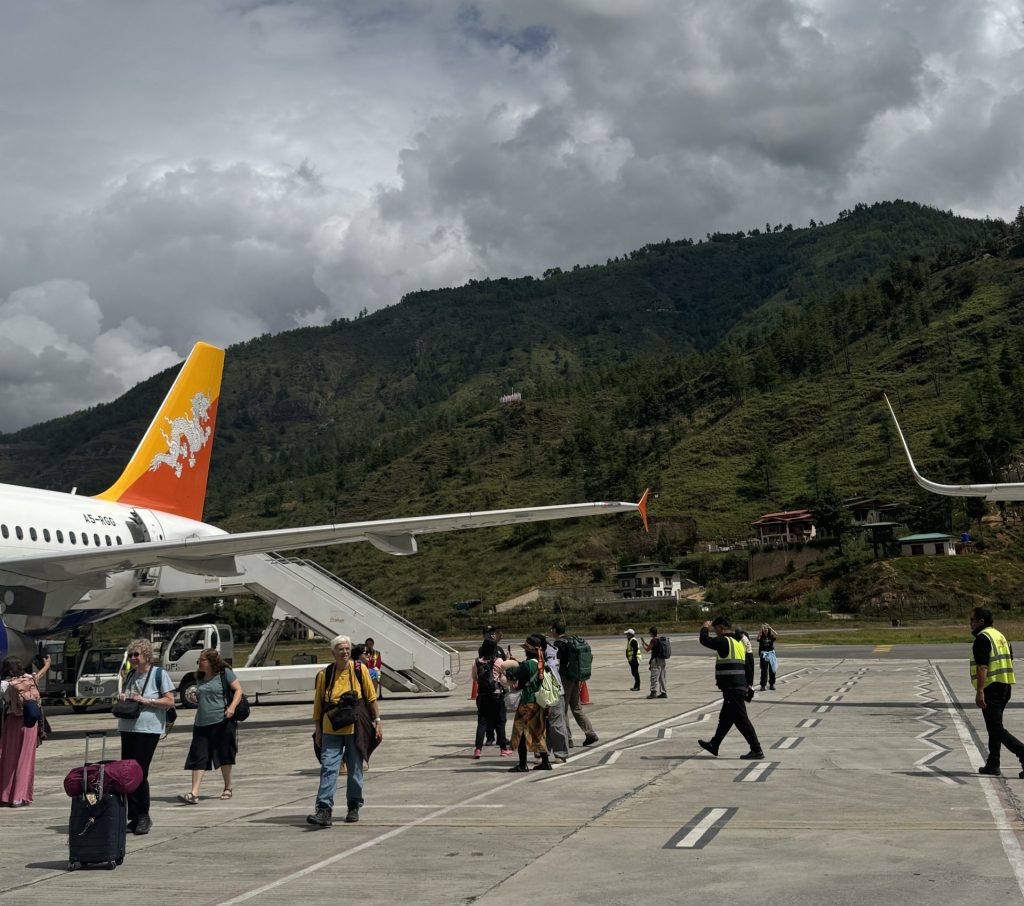

Landscapes That Take Your Breath Away
From snow-capped Himalayan peaks to lush green valleys dotted with rice terraces and prayer flags, Bhutan’s scenery feels like a living painting. The Paro Valley, home to the iconic Tiger’s Nest Monastery (Taktsang), is perhaps the most photographed location — a sacred temple perched dramatically on a cliffside at 3120 meters (10240 feet) above sea level.
To the east, Bumthang reveals the spiritual heart of the kingdom, with ancient monasteries and tranquil landscapes. In the west, Punakha Dzong, standing at the confluence of two rivers, is often described as Bhutan’s most beautiful fortress.

Paro Taktsang - Tiger's Nest
The hike to Paro Taktsang is a must when visiting Bhutan. As above mentioned it is a monastery built on a cliffside at 3120 meters (10241 feet) above sea level. The architecture is mind blowing, so as the view. I read a lot about it before visiting and I think there is a lot of misinformation about how "easy" it is. It isn't easy, but it's definitely doable. So here's a walk through on what you can expect.
The start - The walking starts from a small parking lot, where you (or your guide) buys the ticket and you can also use the toilet and rent walking sticks if needed. I personally don't like walking sticks so I didn't rent one, but I saw many people with them, especially older ones as it helped them rest on the way up and was useful on the way down, especially after the rain made the path a bit slippery. Once you walk a few meters more up you will reach the place where you will see donkeys. They can take people up halfway, which I'm sure is helpful, if someone can't make the walk, but other than that it's something I wouldn't recommend. It's not only dangerous with the sometimes narrow pathways, but I also felt sorry for the donkeys having to carry people. It's not a cause to support, that's for sure.
The first half - We were walking for a good 10 minutes when we reached some small temple like buildings and steps with tree branches, where my guide mentioned that this is the official starting point of the hike. From here on we were continuously walking up through pathways and there were countless spots with amazing views where you could stop for a bit and just admire the beauty of nature. There were also places where you could sit on some natural "seats" and at one point there was a bench as well.

The halfway cafe - We arrived to the cafe after about an hour-an hour and a half of hiking. Most people have lunch here and many actually end the hike at the cafe and turn back from there. It is the first full view you will get of Tiger's Nest and it's already beautiful. We decided to have lunch on the way down, which was a great decision to be honest as going forward with a full stomach is not something I would recommend. I had a small cookie and definitely felt it more than usually because of the elevation. The cafe has a buffet, you can order freshly made food, tea, coffee, water and also some fruits and sweets. When I was there it was all vegetarian food and it wasn't the best, but I didn't really mind. After all you go there for the hike, not to have a gourmet meal. Here you can also make use of the toilet, which was free when I was there, and you will find a small souvenir shop here as well.
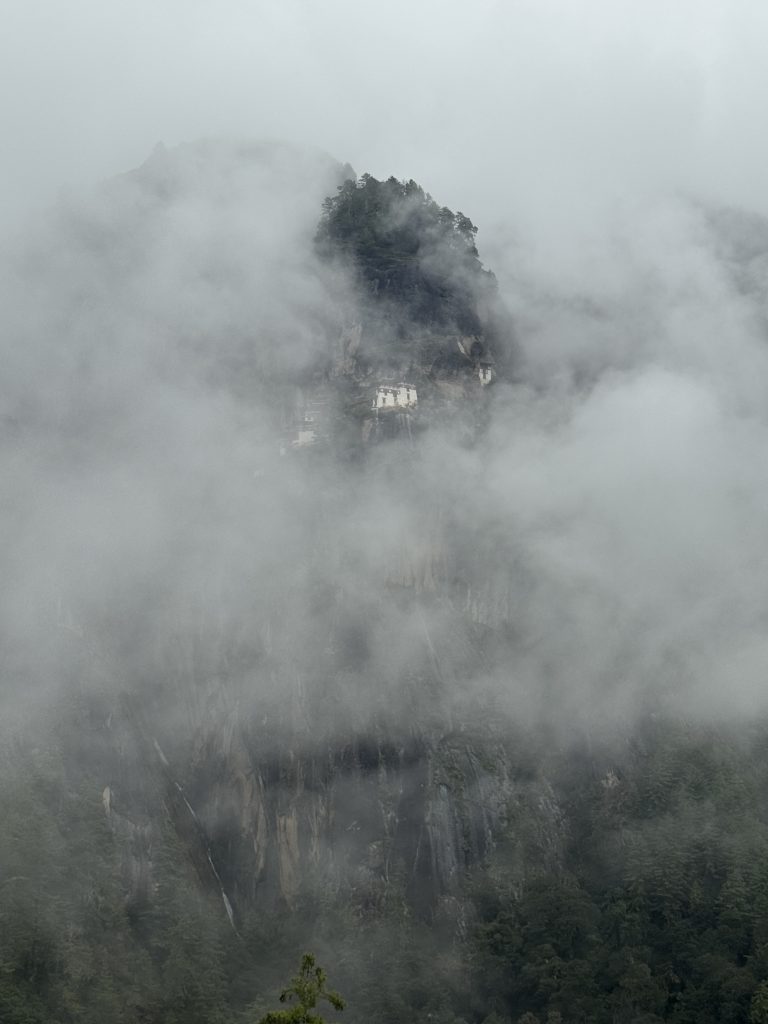
The second half and the Paro Taktsang viewpoint - The second half of the hike is actually shorter, but felt harder because of the elevation, we needed about 45 minutes to an hour to reach the viewpoint. First you go up a lot, then just before arriving at the viewpoint you will walk straight for about 5 minutes. Once you see Tiger's Nest that close it really is breathtaking! You honestly forget about all the struggles you had to get up there and you just can't stop looking at the monastery and admiring the amazing view. Here there are two great spots for taking pictures, one where you can sit and one where you can stand, both are perfect, really. The viewpoint itself is small, but when I was there it still didn't feel crowded, everybody was respectful of each other and waited for their turn to take pictures.

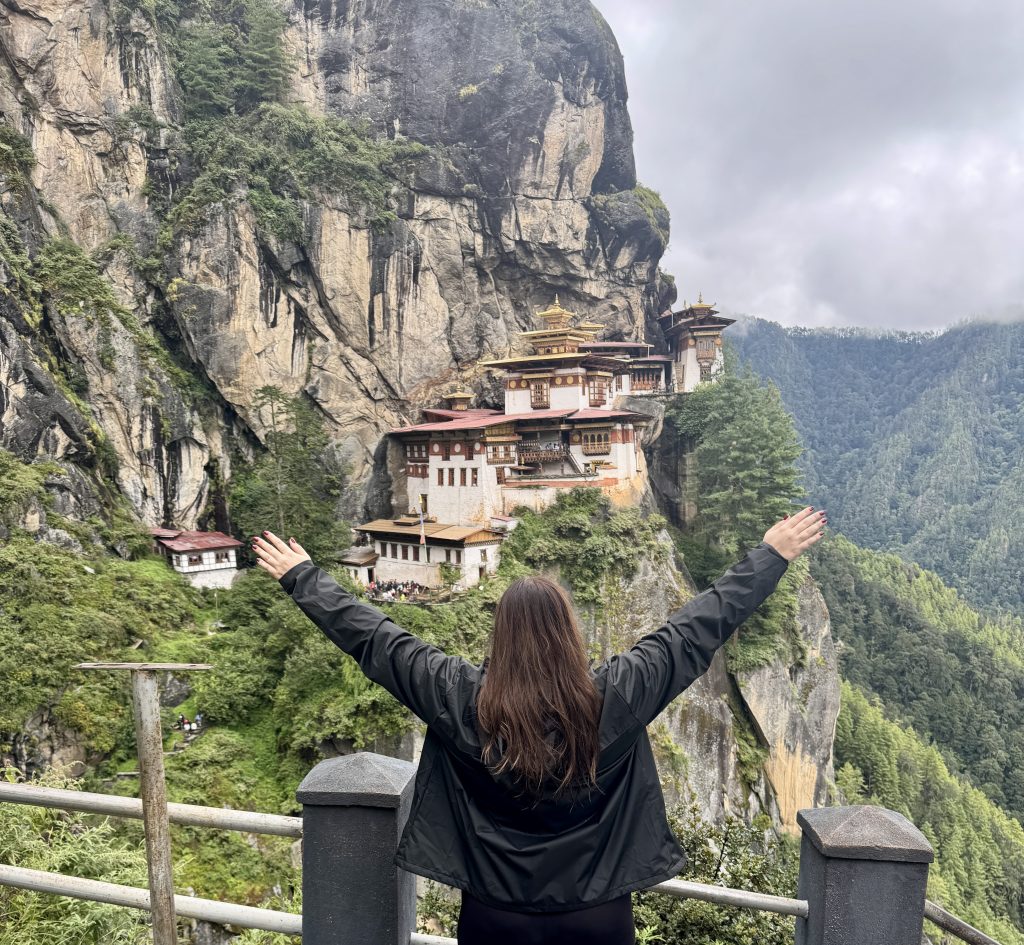
Tiger's Nest Monastery inside - From the viewpoint you will have to walk down and up a fair amount of stairs (a lot) to be able to visit the monastery inside. There was unfortunately a fire a few years ago so some parts had to be refurbished. You can not take pictures inside and the tour of the temple will take about an hour or so. After that you will have to walk back down and up the stairs the same way.
The way down - The way down is fairly easy, but can be hard on the knees. There are a lot of big steps down and if it rains it can also get very muddy and slippery. Here the walking sticks might be useful. As mentioned earlier we stopped at the cafe for lunch on the way down. The whole walk down took about an hour from the halfway cafe to the parking lot.
What to wear and what to pack
- comfortable shoes (hiking boots are not needed, I was fine in runnings shoes that were low to the ground)
- rain coat as the weather can change quickly
- medicine for altitude sickness (I didn't need it, but its useful to have, I heard some people take it)
- hat (in case its sunny)
- sunscreen
- a lot of water
Summary
I do a lot of sports, but never hike and the Tiger's Nest hike was still very doable. Was it easy or comfortable? No, but the views were well worth it. I saw several older people and kids also doing the hike, the important thing is to take your time, there is no rush and its not a competition. Rest when you need it and you will be just fine. It's a hike of a lifetime, so if you are healthy, definitely go for it!
Culture Frozen in Time
Bhutan is one of the few places in the world where traditional dress is still worn daily. Men wear the gho, and women the kira, colorful woven garments that showcase the nation’s rich textile heritage. Festivals, or tsechus, are held throughout the year, featuring masked dances, traditional music, and communal celebrations that honor Bhutan’s Buddhist beliefs.
Every dzong (fortress) and monastery tells a story — not just of faith, but of resilience, community, and identity. Visitors quickly learn that in Bhutan, spirituality isn’t separate from life; it is life.
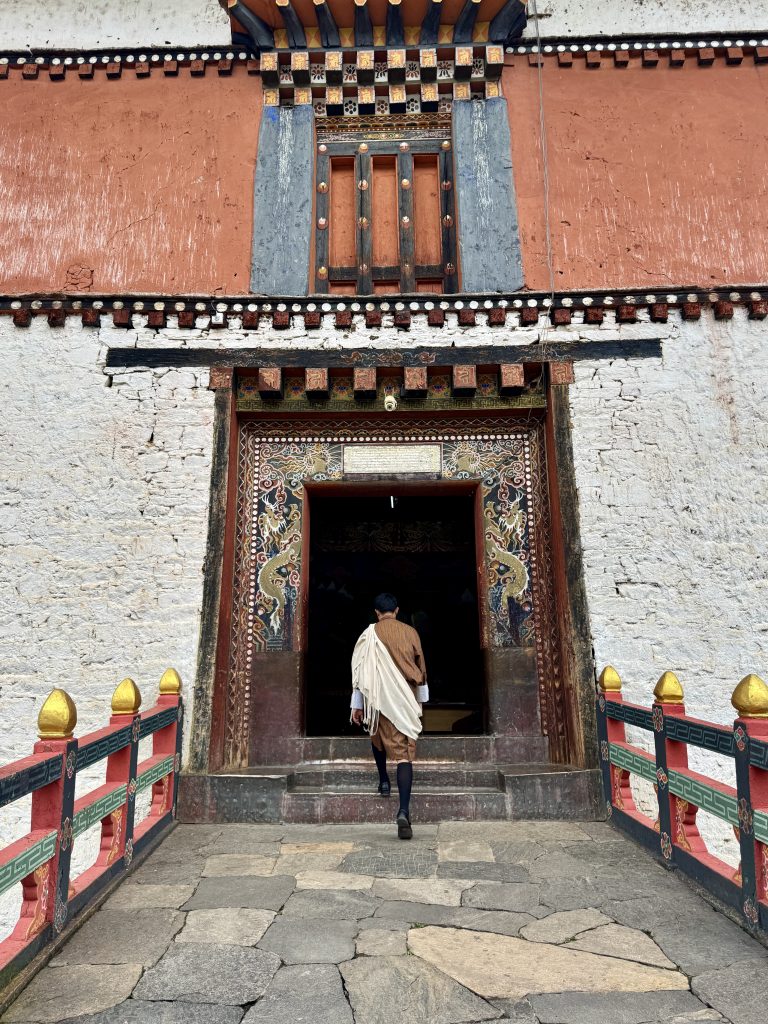
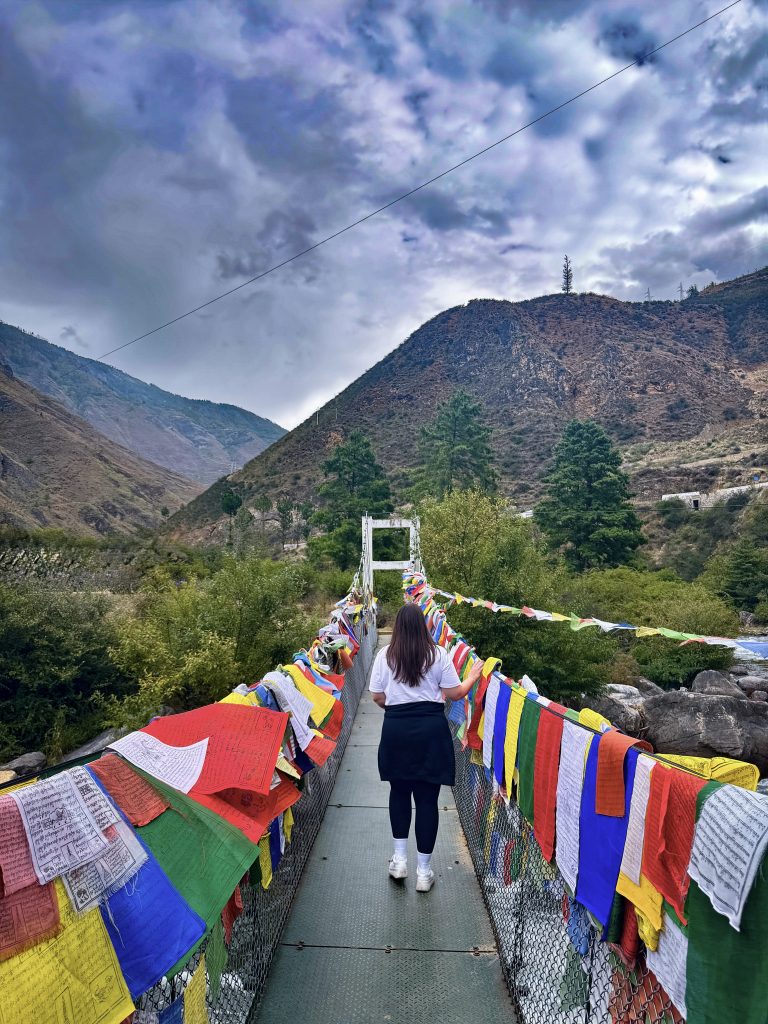
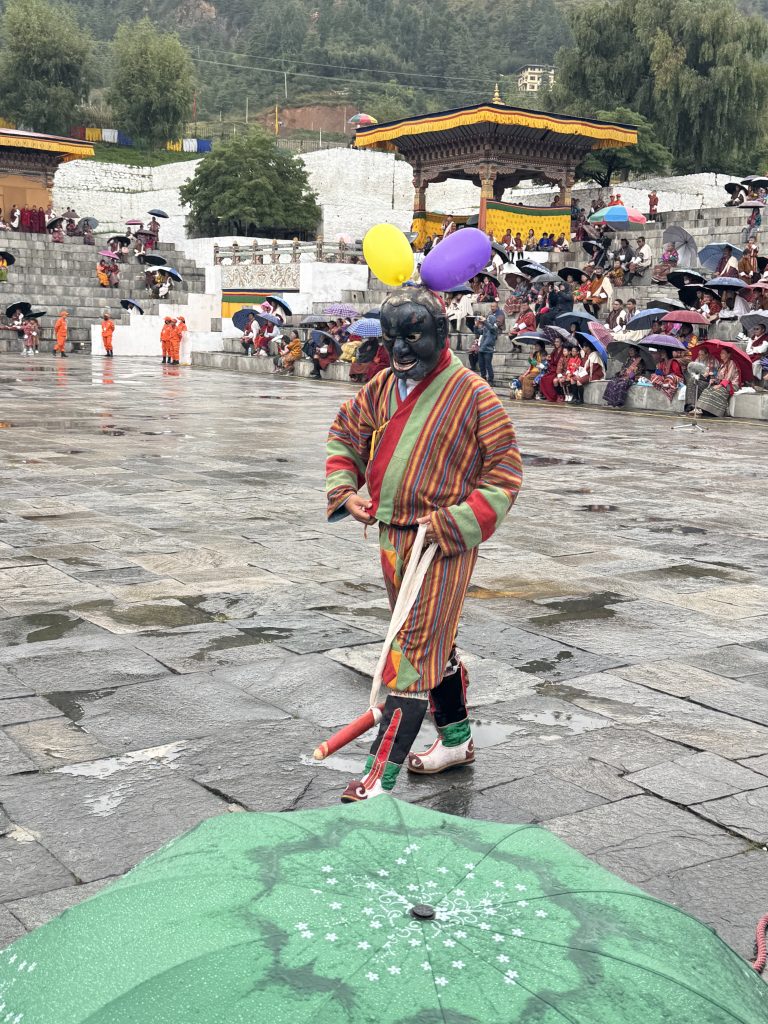
A Model for Sustainable Tourism
Bhutan has long been a pioneer of “High Value, Low Impact” tourism. Visitors must pay a 100 USD per night Sustainable Development Fee (SDF), ensuring that tourism directly benefits local communities and the environment. This policy keeps tourist numbers manageable while maintaining the country’s pristine beauty and cultural authenticity.
Though Bhutan is embracing modernity — with increasing internet access, improved infrastructure, and even a budding creative scene — it does so on its own terms. Billboards are rare, plastic bags are banned, and nearly three-quarters of the land remains forested. The country’s constitution even mandates that at least 60% of its land must always remain under forest cover. In Bhutan, progress means protecting what matters most.
The result? A travel experience that feels personal, meaningful, and deeply respectful — where visitors are guests, not tourists.
Interesting Facts in Bhutan
Bhutan is definitely one of the most interesting destinations and not only because of the breathtaking nature. Here are some interesting facts:
- Bhutanese people worship phalluses. Yes, you read that right. In their culture it brings good fortune and keep away evil, so don't be surprised if you will see the symbols literally everywhere. During my trip there was a festival and the performers were walking around with some decently sized ones, asking people if they want it or sometimes rubbing them on to you. Don't get offended as they mean well and only want you to have good fortune. You can even take some home as a souvenir as they can be found in every souvenir shop.
- You will find cows happily walking around in the middle of the road and sometimes even sleeping there. After all it's their world, we are just living in it.
- Based on the new rules tourists now can be without a guide in the city, but they can not drive, therefore the best way to visit is still by hiring a guide. If you buy a tour package in Bhutan you will get a personalized itinerary, accommodation, three meals a day, water, a guide and a driver. Most tour operators will also take care of obtaining a Visa for you.
- Paro Airport has a very interesting landing with a short runway, so only pilots with special licenses can fly there. I was a bit nervous after reading about the airport before going to Bhutan, but the pilots were very professional and the landing was very smooth. If you have the option to choose your seat and want the best views, then pick a left side window seat for arrival and a right side one for departure.

Visiting Bhutan: Practical Notes
- Visa & Permits: Most travelers (except visitors from a few countries) must obtain a visa and book through a licensed Bhutanese tour operator or partner.
- Best Time to Visit: Spring (March–May) and autumn (September–November) offer clear skies, pleasant temperatures, and vibrant festivals.
- Currency: Bhutanese Ngultrum (Nu). The best is to exchange money right at the airport, there is an official money exchange at the arrival with good rates.
- Language: Dzongkha is the national language, but English is widely spoken.
- SIM card: There are two places that sell SIM cards at the airport at arrivals just before exiting the building. Both offer physical SIM and eSim as well, but you can only pay by cash. I bought an eSim for a few days and the cost was 1100 Nu. The setup was very quick and convenient, the girl at the booth did everything and in less than 5 minutes I was ready to go.
A Journey Beyond Tourism
Visiting Bhutan isn’t just a vacation - it’s an invitation to slow down, reconnect, and rethink what happiness truly means. In this mountain kingdom, peace isn’t a distant dream; it’s a daily practice woven into every smile, every prayer flag, and every mountain breeze.
Bhutan reminds us that true wealth lies not in what we own, but in how we live.


